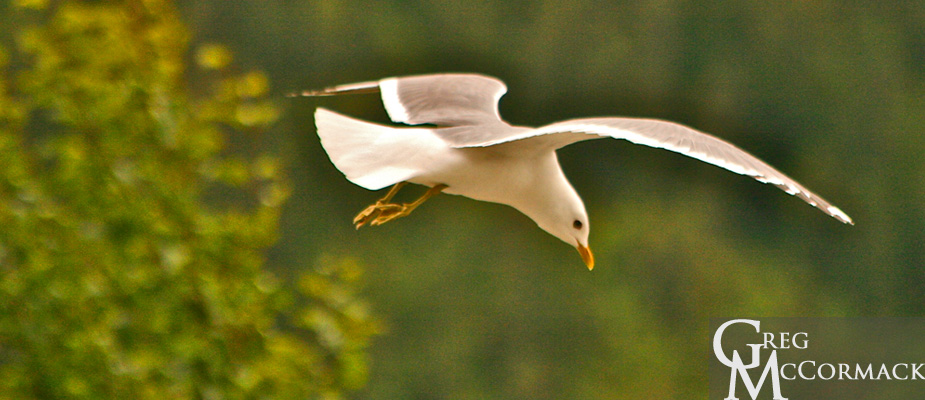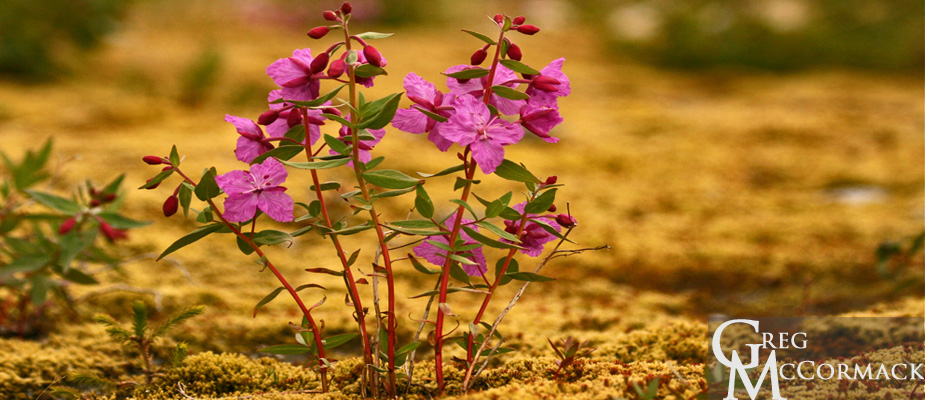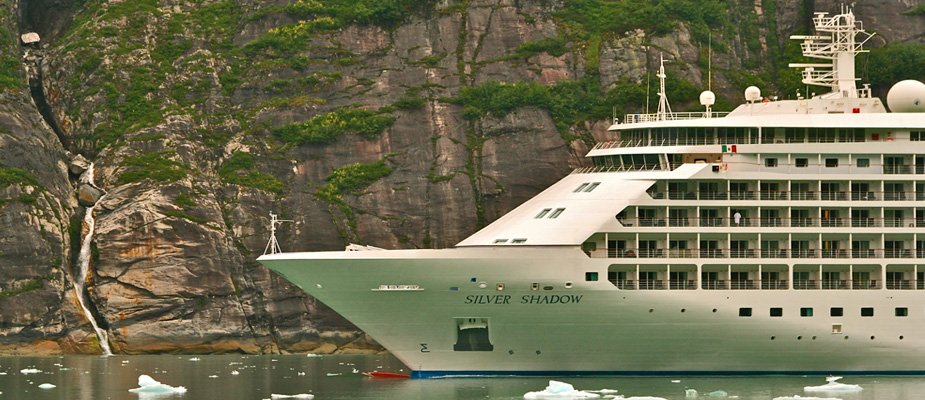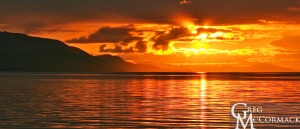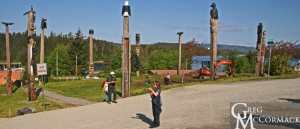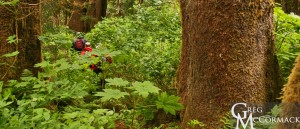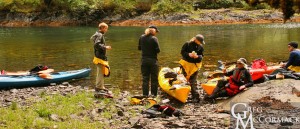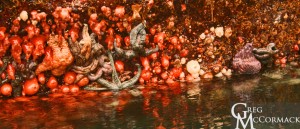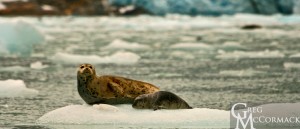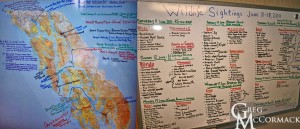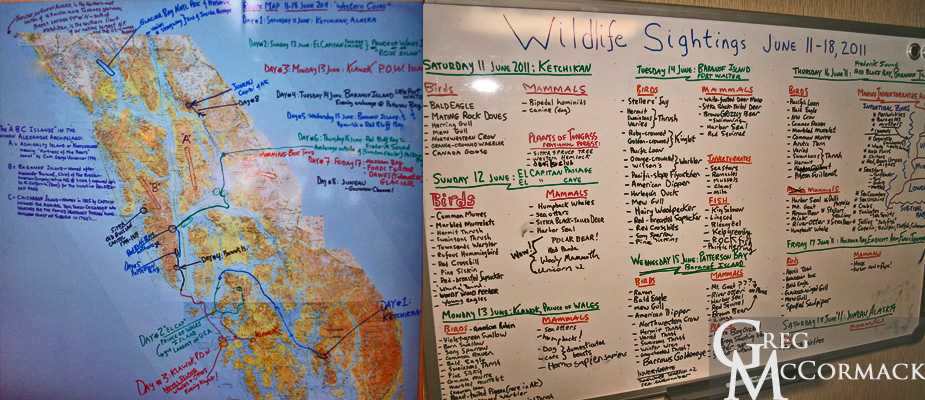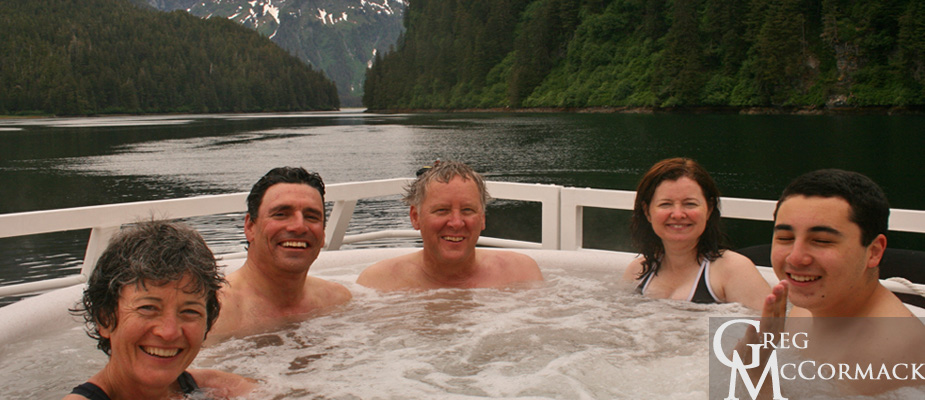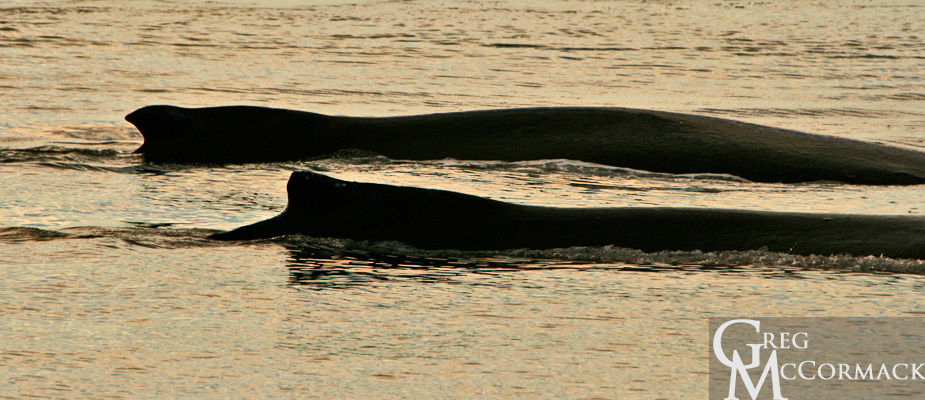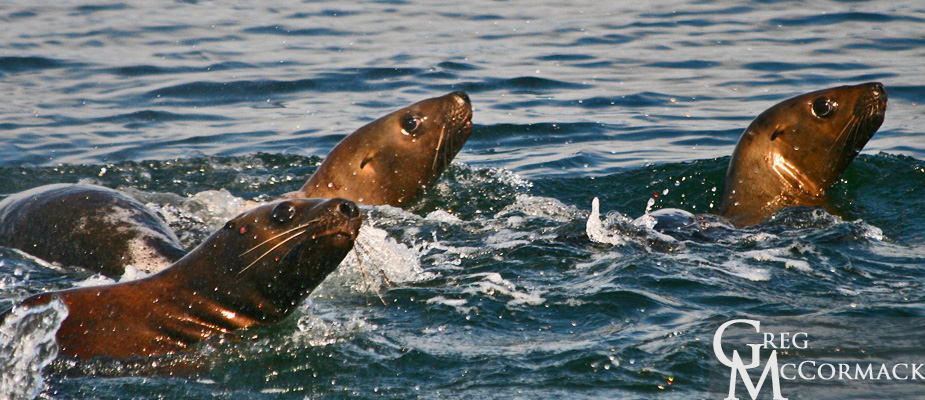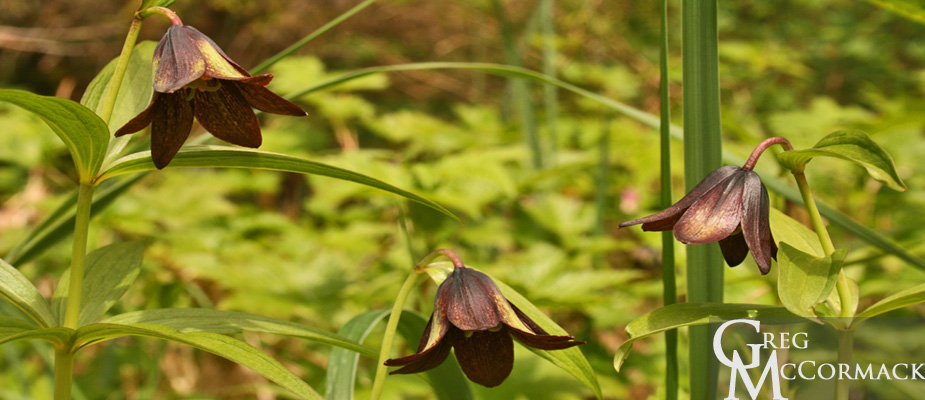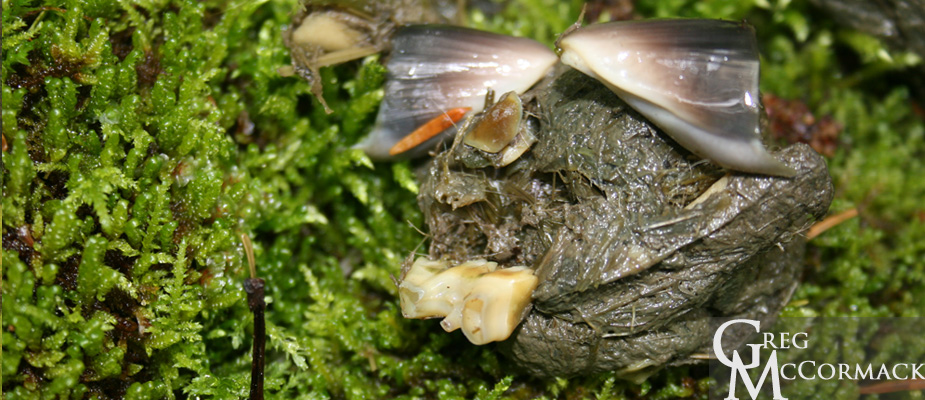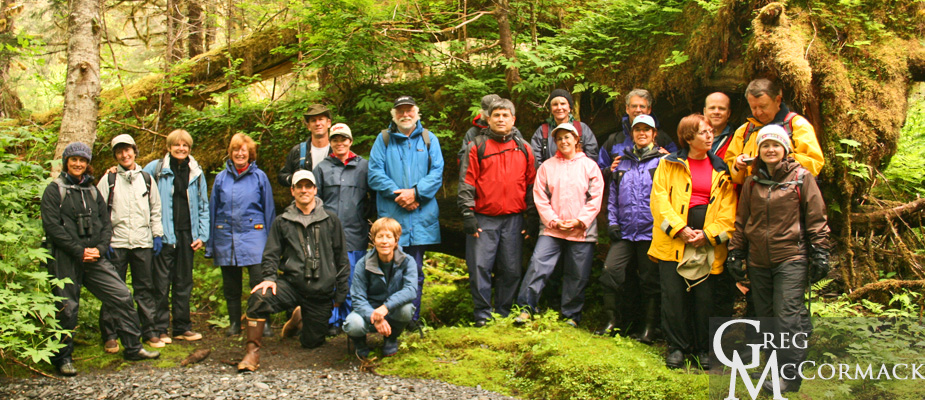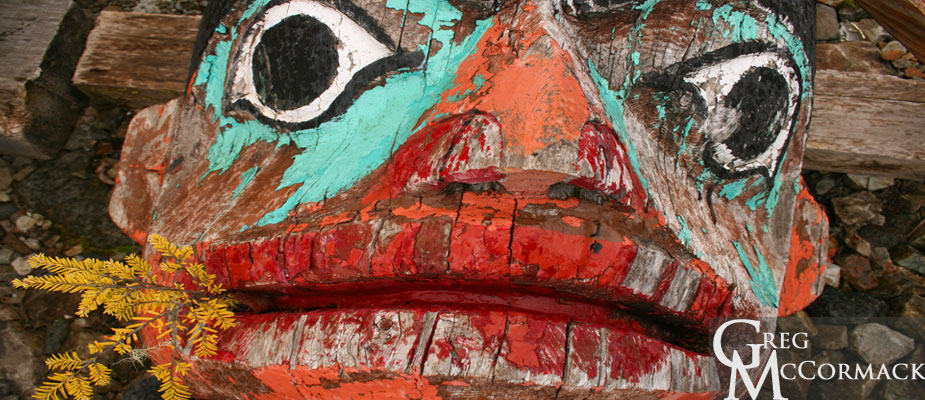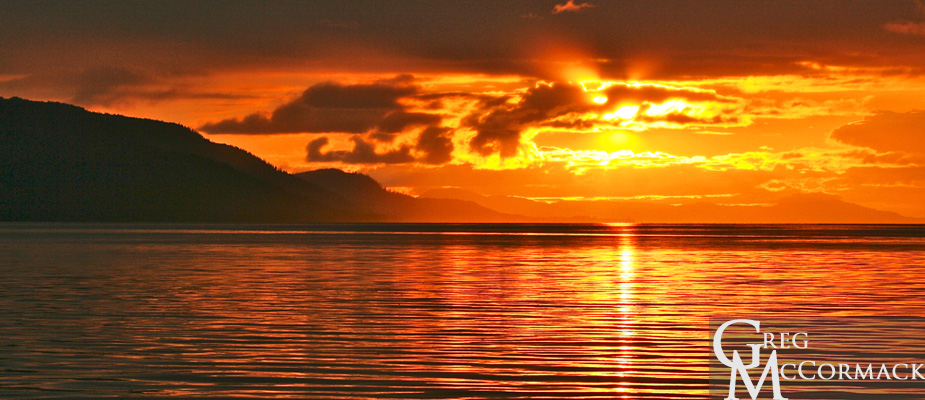Monday | June 20
August 8, 2011 by admin
Filed under InnerSea Discoveries
Thomas Bay and the Baird Glacier
Everyone is very excited for the opportunity to walk up to and on a glacier. First, however, guests have to endure a cold ride on small boats for 30 minutes up the glacial melt-water river to a steep bank drop-off. We disembark on basketball-sized boulders and make our way up to a sandy area where plants are recolonizing the deglaciated landscape.
I draw a large circle in the sand with a stick and receive some quizzical looks from my group of 18 hikers. I explain: “This large circle I’ve drawn is planet earth. I draw some lines north and south of the equator and semi-circles just below the North and South poles.”
I jam my stick into one of the dashed lines on my make-shift earth. “Tomorrow at 12 noon at this location 23-degrees north of the equator there will be no shadow cast. What is the name of this geographical position? Right you are, the Tropic of Cancer! What will happen at this circle just below the North Pole? Yes, exactly 24-hours of daylight…no sunset will be seen at the Arctic Circle at 66-degrees north latitude.”
“The long daylight is the reason the humpback whales swim from Hawaii and the gray whales from Mexico. With such long days in the northern hemisphere, plankton blooms are fed upon by krill and schooling fish which provides sustenance not only for whales but other marine mammals and seabirds as well.”
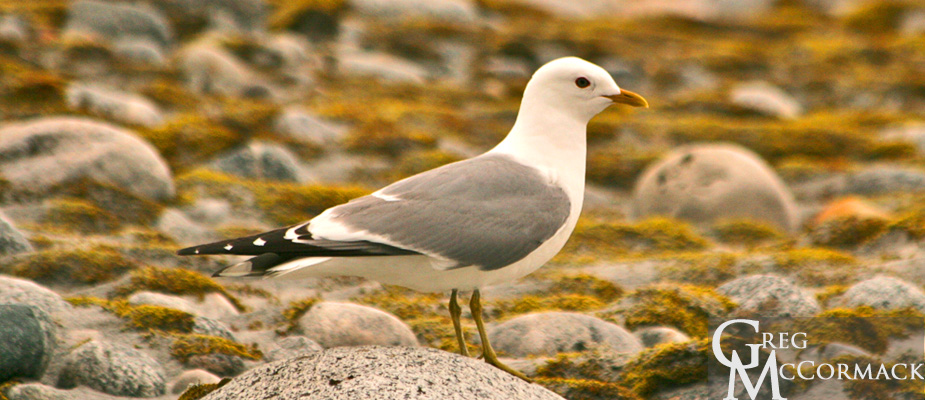
“The Arctic Tern flies up from Antarctica along with millions of migratory birds from central and south America. The long days provide just the right conditions for insects to multiply by the billions. They in turn allow our avian friends to raise not just one brood but two or three with the ability to feed young around-the-clock. If there is a term to describe Alaska and the Far North at this time of year it is “fecund”.”
Just a little bit higher from my scratchings-in-the-sand we are pleased to see so many gorgeous flowers blooming on the moss and lichen-covered rocks.
It’s about a mile walk past the recently colonized outwash plain. Small alders are the next seral stage of plant succession after the mosses and lichens. A few out-of-place sapling conifers such as the spruce and hemlock were seen. They are doomed because there is far too little nitrogen in the soil.
I mention that it will take more than a century from now before the alders give way to the conifers: “We’ll have to make reservations now and come back with our artificial hearts, brains and limbs to see the changes a century or two from now….”
Indeed, glacial rubble to temperate rainforest is a 200-year process from a recently deglaciated landscape. In the wake of the receding glaciers, forests advance and following the greening landscape are mammals, first the herbivores and then the carnivores.
I spot inter-stadial stumps in the terminal moraine. Otherwise known as “fossil wood” which John Muir described in his book “Travels in Alaska”. He actually burned it during his campfires with his Tlingit Indian guides and Presbitarian Missionary friend Samuel Hall Young. Carbon dating techniques in Glacier Bay National Park and Preserve put some of these non-decomposed stumps at 1000’s of years old…at least up until the point where they are exposed to air from erosion, after millennia buried in rubble.
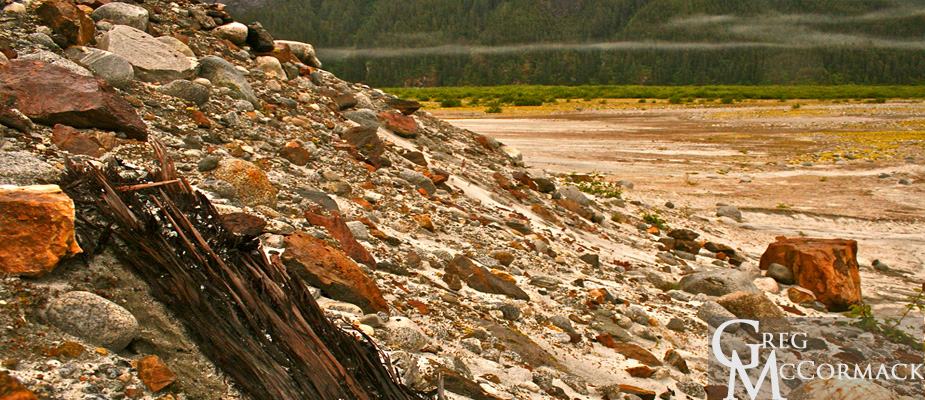
Our trek across the glacier is a favorite activity for our guests. There is the boot-sucking mud that grabs at our boots during our walk. Also, many features of the glacial surface and moraine just in front of the snout keeps you contemplating, for example: What forces are at work to produce such bizarre sand-covered pyramids? They stand several feet high and are covered with fine sand. Most seem to be along a transverse and sutured closed crevasse.
We head back elated from our days adventure for our small boat trip back to the mother ship.
Sunday | June 19
August 3, 2011 by admin
Filed under InnerSea Discoveries
Tracy Arm and the Sawyer Glaciers
Terns and Eagles On Ice!
Today is the first of several days visiting up to 7 different glaciers in the Coastal Mountains of Southeast Alaska. The seven glaciers our guests have choices to see emanating from the Stikine Icefield: Sawyer, South Sawyer, Dawes, Baird, Patterson LeConte and Shakes (the latter two are in ice-choked waters and require a 3rd party shore excursion operator that uses special boats or float planes).
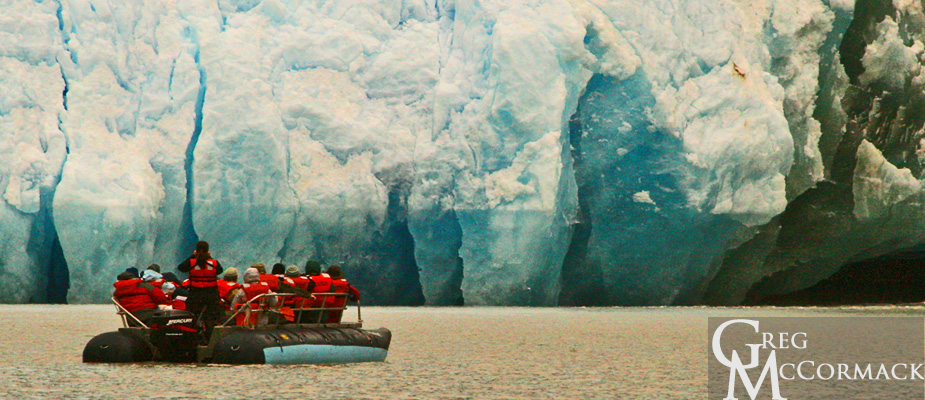
The Stikine Icefield is approximately 100 miles long from the Whiting River in the north to the Stikine River in the south and about 30 miles wide from tidewater up and over the crest of the Coast Range past the international boundary into British Colombia, Canada.
We lift anchor on the outside of Holkham Bay and make our way 21 nautical miles up Tracy Arm to the Sawyer glaciers, one of the most extraordinary fjords in the world. I spend the morning on the forward deck where guests congregate on two levels to take in the outstanding scenery.
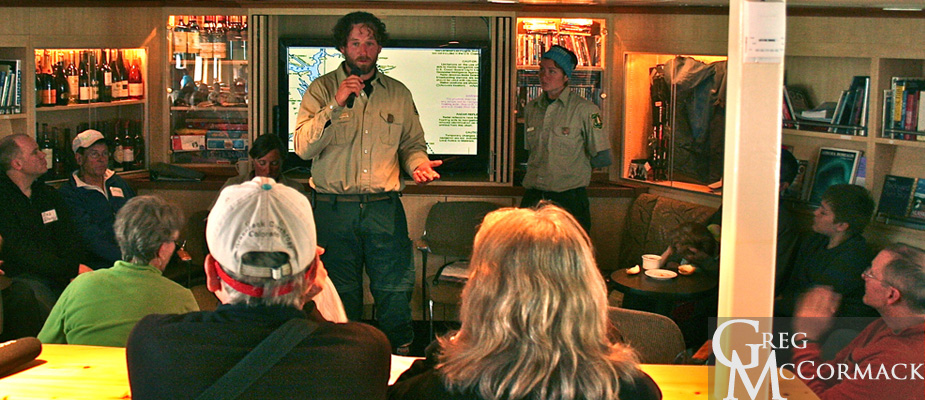
Guests are taken aback by the sudden appearance of a large Silversea cruise ship named the M/S Silver Shadow. We could count only 10 people out on decks (port side). Perhaps they were all on the starboard side taking-in the massive granitic walls. It’s amazing how small and how few decks we have in comparison.
Further up the fjord, it’s exciting to see the long-distance champion of all the 9,200 species of birds on the planet: the Arctic Tern. It flies up to Alaska to breed from as far south as the Antarctic continent.
I figure it has to be flying 12,000 miles up here to breed and another 12,000 to return for feeding in the Austral Summer. With all the extra flying they do searching for food, particularly during the northern summer to find food and feed the young, I’m guessing they do close to 30,000 miles a year, which equates to 2500 miles a month or over 80 miles a day.
Arctic Terns join the Mew and Glaucous-winged gulls plying the waters for hand-sized shrimp and schooling fish at the face of the glacier. When tons of ice fall during calving events, all sorts of prey is churned up to the surface, arriving discombobulated or dead for easy pickings.
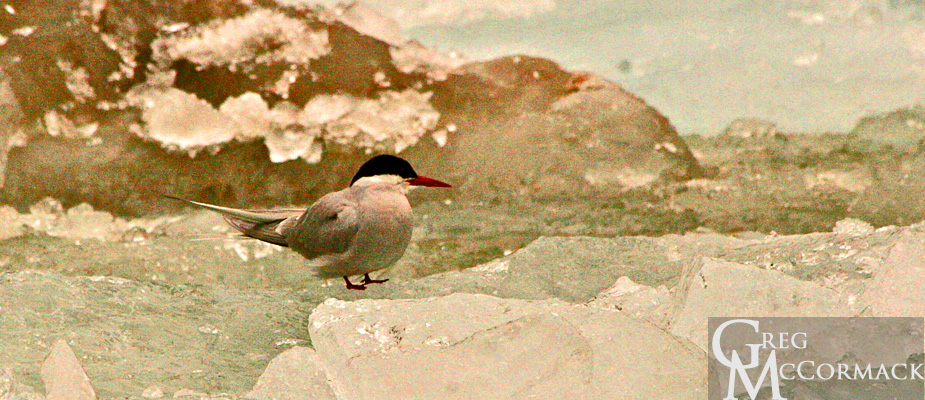
We offer small boat tours that prove to be productive for watching calving events with thunderous sounds and significant swells generated. On our way back to ship, we see and welcome two Tongass National Forest Rangers aboard who arrive via kayak to our stern.
The highlight of the early afternoon is a significant number of Bald Eagles perched on several ice-bergs.
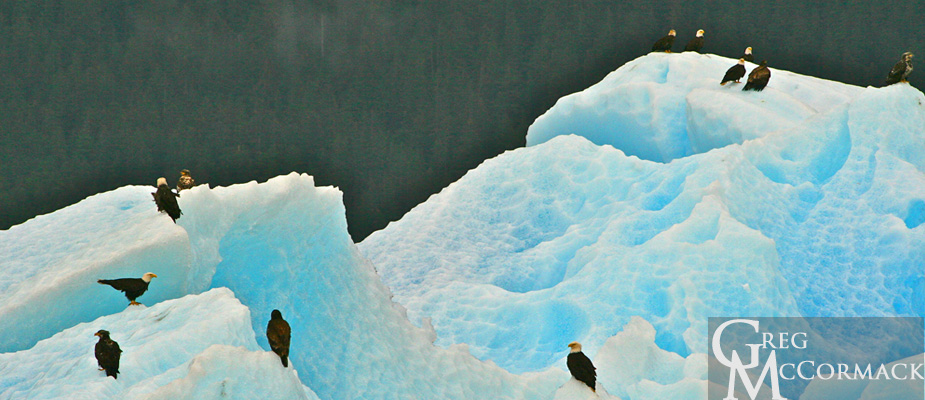
I’ve rarely seen more than one on a berg. To see a dozen or more on the blue ice was thrilling and it was only a minute or two before everyone was alerted to get outside on the decks to see the spectacle at Holkam Bay. The waters are very productive for birds and marine life due to the joining of the Tracy Arm and Endicott Arm fjords. Here the underwater terminal moraine separates the Holkam Bay from the deeper Stephens Passage. My guess is that the eagles were waiting for seals to give birth to pups. The afterbirth provides a needed nutritious supplement. The other possibility is that there is an abundance of schooling fish such as the eulachon or capelin and/or Pollock right now.
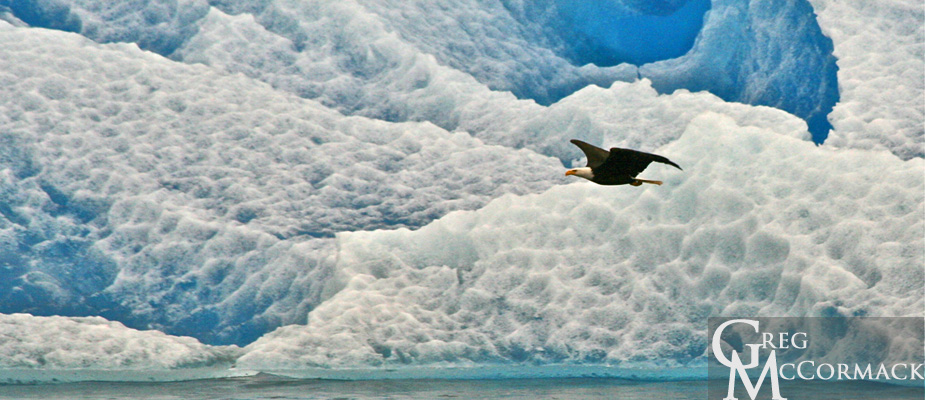
We motor south through Stephens Passage to Frederick Sound. I give a marine radio call to the good folks of the Alaska Whale Foundation who are stationed at the Five Fingers Lighthouse. Captain Andy of the Research Vessel Evolution accepts our invitation to come aboard for an evening lecture about his research on the threatened Humpback Whale. He comes aboard with 4 college student research assistants, who join me for dinner before moving up to the top deck. Andy regales us with a fascinating talk on whale ecology. He entertains us with his wit and charm and answers at least a doze questions on his research interests.
Where is gMack now? InnerSea Discoveries Expedition Week 7
It has been an exciting week on the InnerSea Discoveries Expedition Click Links Below to read daily updates from Week 7 of the Trip:
June 11-18th, 2011
Saturday | June 11th
Welcome Aboard!
Sunday | June 12th
El Capitan Cave
Monday | June 13th
Klawock
Tuesday | June 14th
Big Port Walter & Baranof Island
Wednesday |June 15th
Patterson Bay & Baranof Island
Thursday | June 16th
Red Bluff Bay
Friday | June 17th
Fords Terror Wilderness
Saturday | June 18th
Juneau
Saturday | June 18
August 2, 2011 by admin
Filed under InnerSea Discoveries
Juneau
I update the map and wildlife list for our week-long voyage. I draw a profile of the intertidal zone (ITZ) on the grease board and have a couple of guests help me look-up a few of the creatures seen during our snorkeling session yesterday.
Friday | June 17
August 2, 2011 by admin
Filed under InnerSea Discoveries
“I DATED YOUR SISTER!”
This is what I jokingly tell my guests on my 2nd small-boat tour after meeting Tongass National Forest wilderness ranger Solan Jensen. We could see his food hanging in a tree above his camp adjacent to where we drop off guests for a low-tide circumambulation. Solan greets us and introduces us to fellow ranger Iris Neary. I knew Solans’ name had sounded familiar! I met his sister back in the mid-90’s in Juneau. We worked for the Glacier Bay Tours and Cruises (bankrupt since 2006) and I have not had the good fortune to work with her since that bygone era.
Aleria now works as the NOAA marine mammal stranding coordinator for the Alaska region. Her brother Solan is an expert naturalist and is working another year as a kayak ranger. One of our guests recognized Solan as the naturalist he had on a vacation to the Antarctic region years earlier. During the northern hemisphere winter (Austral summer), Solan works for Quark Expeditions. Feels like a small world today!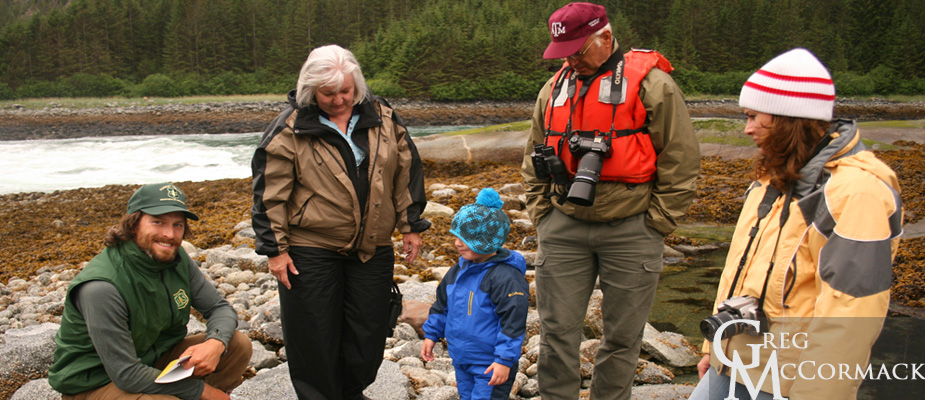
We tour the biologically diverse tide-pools. Folks are mesmerized watching the standing waves of the outgoing tide that passes through this narrow part of the fiord.
Later we cruise up to the Dawes Glacier, a tide-water glacier that discharges 1000’s of tons of ice each day during calving events. Harbor seals “surf” the bergs as they are carried away from the 250-foot wall of ice on the outgoing tide.
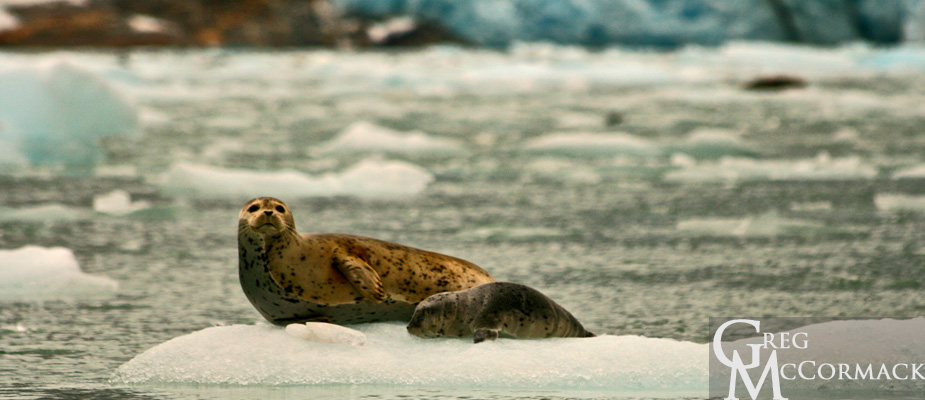
Thursday | June 16
August 2, 2011 by admin
Filed under InnerSea Discoveries
Red Bluff Bay
Snorkeling Expedition and Cruising for Marine Mammals
An early morning scout in a small boat to the entrance to Red Bluff proves fruitful. I find two excellent sites to lead my group of snorkelers. What I look for in a site is an area where tremendous amounts of water cycles by during the ebb and flow of tide-waters. This is found at the entrance to bays and headlands in larger channels. One of the exposed rocky reefs is covered with the scrotum-like bodies of bright orange sea anemones.
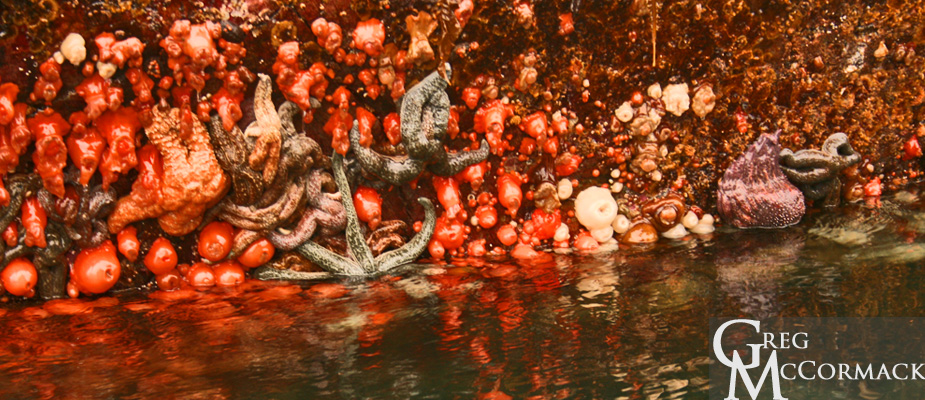
Back in the ship I help the snorkelers get into their 6 mm wetsuits and ask them to carry boots, gloves, hood, snorkel, mask and fins into the waiting mono-hull. We head to the outside of the bay and land on a Caribbean-like small, white-sand beach! Starfish (not really fish, better to call them sea stars!) are everywhere, exposed by an extremely low tide.
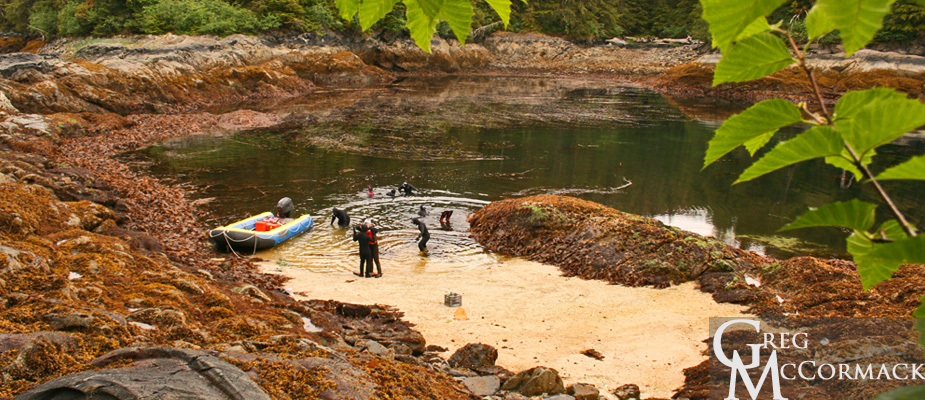
I lead everyone across a small bay through thick kelp forests of Laminaria and Nereocystis to more sheer walls of intertidal goodness. Every square inch is covered with moving and attached creatures vying for a niche in these biologically productive waters. I’d have to say, of all the scuba diving and snorkeling I’ve the years in Alaska, this day has to top them all for pure fun.
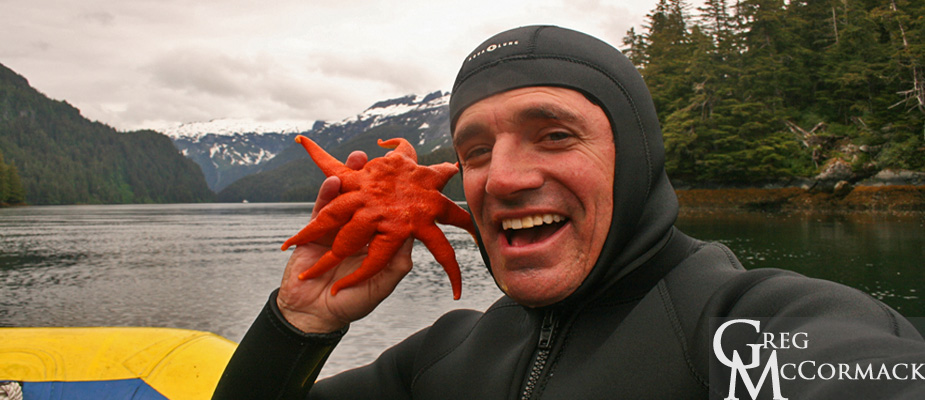
On our way back to the ship, I ask our driver Jen to pull over toward the shore (where a patch of snow comes down close to waters edge) for a group photo. Yes, we are all certifiably crazy.
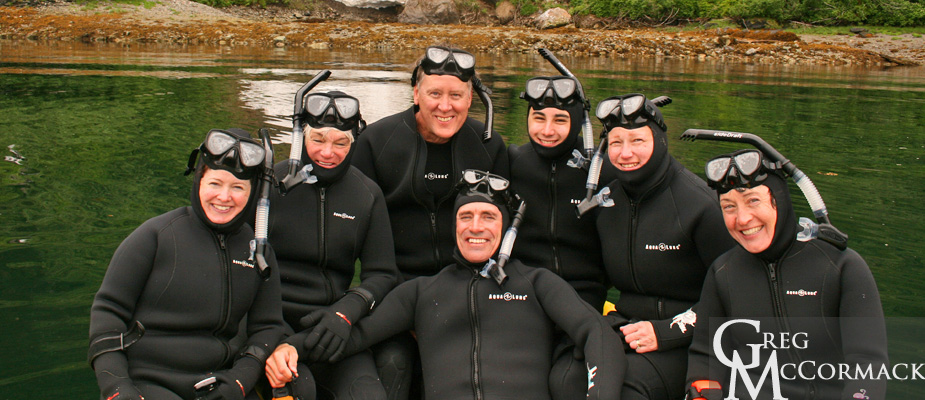
We feel hypo-thermic and take the opportunity to become hyper-thermic in one of our two hot tubs at the stern of the 300-level deck. Oh, the tingling sensations of capillary re-fill were numbing.
In the afternoon, we enjoy spotting several humpback whales, two of them “logging” at the surface for a mid-day nap.
Dozens of Steller’s Sea Lions swim toward our ship from a haul-out site on the Brothers Islands. They are very playful and curious and we excited to snap a few pictures of these animals that are Federally listed as “threatened” with extinction.
Wednesday | June 15
August 2, 2011 by admin
Filed under InnerSea Discoveries
Patterson Bay & Baranof Island
Everybody onboard is excited and express how their vacation has far exceeded their expectations.
Today is a fabulous day for a kayak, and I have the privilege of leading a small group. There is so much to see and so much to explore in this pristine wilderness area on South Baranof Island.
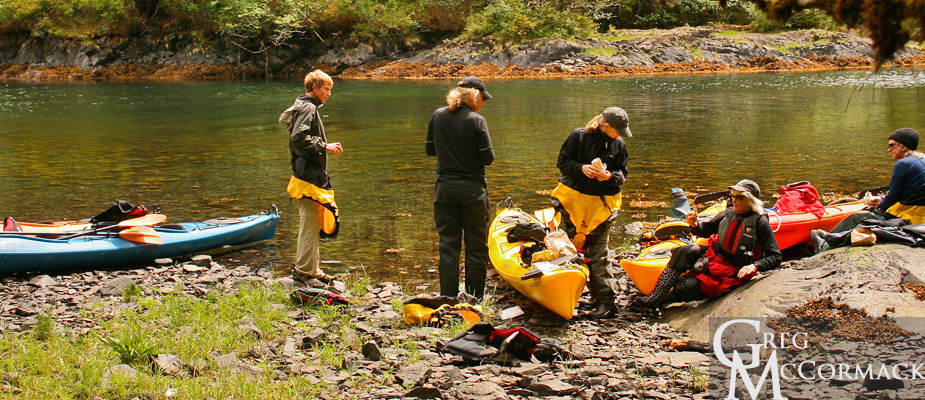
Following are a few notes jotted-down in my “rite-in-the-rain” waterproof journal: “During the last mile or so of my kayak I was pondering how it is possible that each and every day seems to top the last day in terms of excitement. I have often heard folks say that they don’t understand how we can possibly have a better day than the day we just had, and yet, invariably, it happens…day, after day, after day.”
“Undoubtedly, each day brings newness and surprises. Due to the small size of the ship and our collective enthusiasm for being where we are, we have ample opportunities to get to know our fellow travelers. Stories are swapped in the lounge, at the dinner table, in the hot tubs or out on the viewing decks. Everybody seems to be relaxed, in a mood for a great time and certainly not caught up with appearances. Preconceived ideas are dropped from our minds and we allow ourselves to get lost in each and every moment”
“After a certain amount of time hanging-out and getting to know each other, it seems as if we all become exposed to some kind of magic potion that gives us the capacity to be more receptive to the beauty and the power of the place that surrounds us.”
“Certainly we forget unimportant things like what day of the week it is, have little interest in current events in the world and have little time to think about what the boss back home might be thinking. We let go of all worrisome, nagging doubts and become connected to something greater. Is it possible that we are absolutely “in the present”? Have we all arrived at the state-of-being where all that matters is the here and now? I am certain that a significant transformation takes place.”
Tuesday | June 14
August 2, 2011 by admin
Filed under InnerSea Discoveries
Big Port Walter & Baranof Island
Today I have the pleasure of leading a half-day hike in the dazzling rainforest at Lover’s Cove in Big Port Walter.
Check out the video below:
Most of the hike is bush-whacking through 5 to 10-foot tall salmon-berry shrubs. Huge sitka spruce and western hemlock trees towered above us. Rows of large trees grow on fallen nurse logs as we follow a meandering salmon stream. 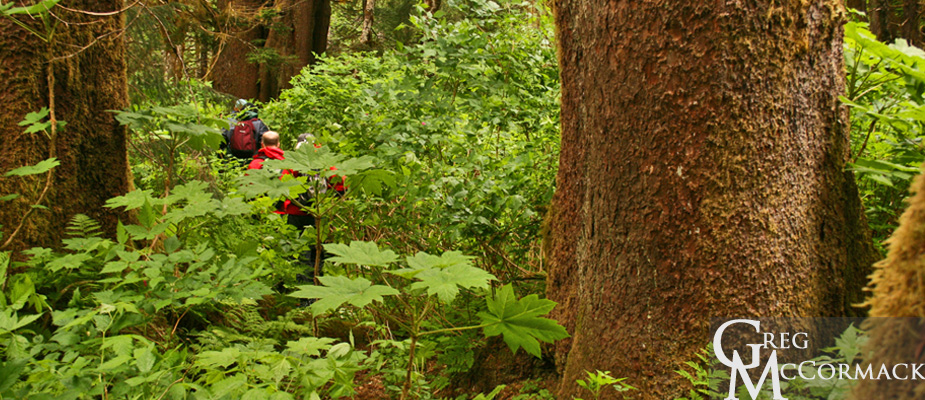
We find fresh bear scat full of teeth and hooves of a sitka black-tailed deer.
People are in a Zen-like state of awe. While snacking, I address our group of intrepid travelers and say: “This is it folks…the way the rest of the world used to be. Prime salmon spawning habitat beneath surrounds us on all sides. Streams in California used to be chock-full of salmon with grizzly bears feeding on them. Now the streams are mostly empty and degraded. The last brown bear in California was shot in 1924. Extirpated…extinct.”
We have time for a group photo in front of a fallen giant and head back to the shore where a waiting small boat takes us back to the comforts of the “mother ship”.
Tonight we cruise a couple of dozen nautical miles to the north in Chatham Strait to another beautiful fiord. Guests and crew come out on the decks for the ever-changing scenery and a chance to see wildlife.
The lighting, coupled with the fresh smells and the sounds of waterfalls cascading down the cliffs is very stimulating. The gentle hum of the engine cruising at 4 to 5-knots is rather soothing. Coming into a bay or fiord for the first time is sublime. So new, so fresh…the water looks like oil, especially the reflections of sky and clouds. The smallest waves create oblong circles reflecting blue sky and streams by like a moving Monet painting.
The songs of the crepuscular animals—the thrushes–serenade us as we move deeper into Patterson Bay to our anchorage.
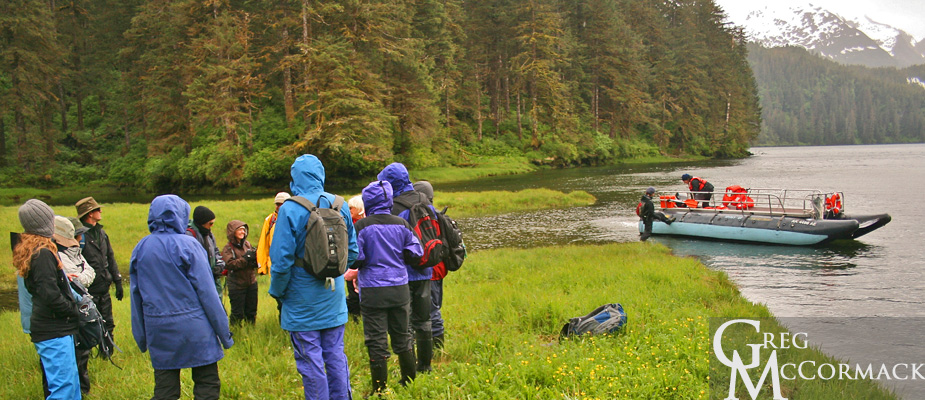
Monday | June 13
August 2, 2011 by admin
Filed under InnerSea Discoveries
Good birding day in town as we explore totem park and carving shed. Some of the bird friends we saw and heard in the small town town today: barn swallow, violet-green swallow, orange-crowned warbler, song sparrow, pine siskin, red crossbill, mourning dove, and lots of eagles and ravens.
Sidney, the young teenager niece of Les our guide leads an informative tour along with James the wood-carver. We hear a lot of “learning by doing” from lead guide Les. Les is very animated and says that a Tlingit speaker that has his hands tied behind his back does not have the ability to speak since they like to do so using their hands.
Saturday | June 11th
August 2, 2011 by admin
Filed under InnerSea Discoveries
The Voyage North from Ketchikan to Juneau begins at 4 p.m. with a new group of very energetic guests. After settling into cabins, attending “welcome aboard” orientation meetings in the lounge and eating dinner, we are all astonished by a sunset that lasts for almost an hour. What a way to begin a vacation! The water is absolutely mesmerizing and hundreds, if not thousands of pictures are digitally etched on memory cards.


